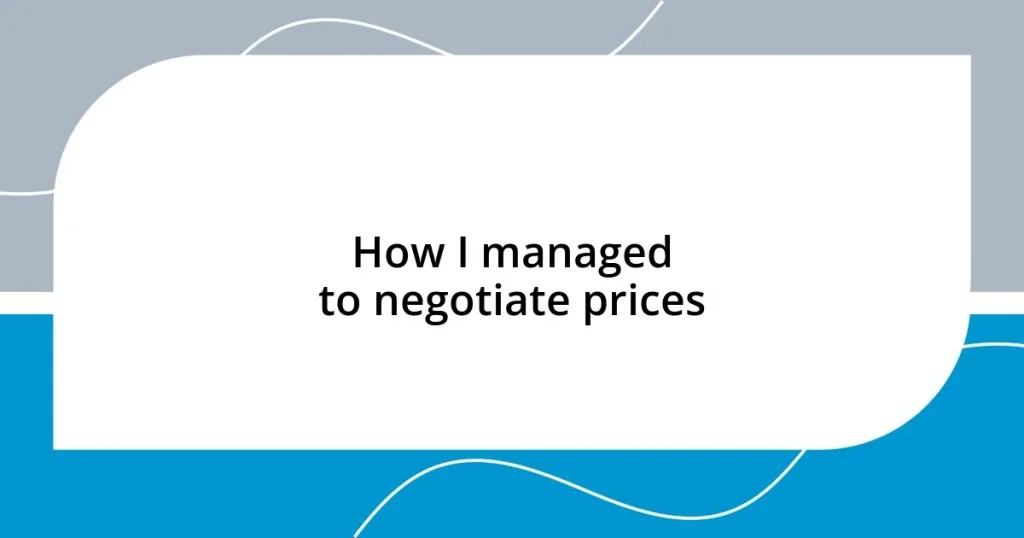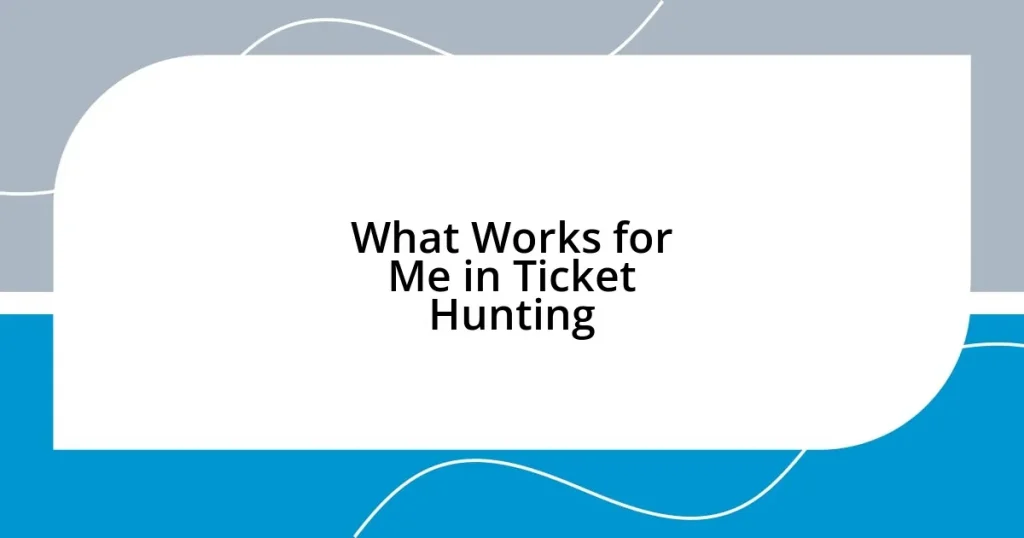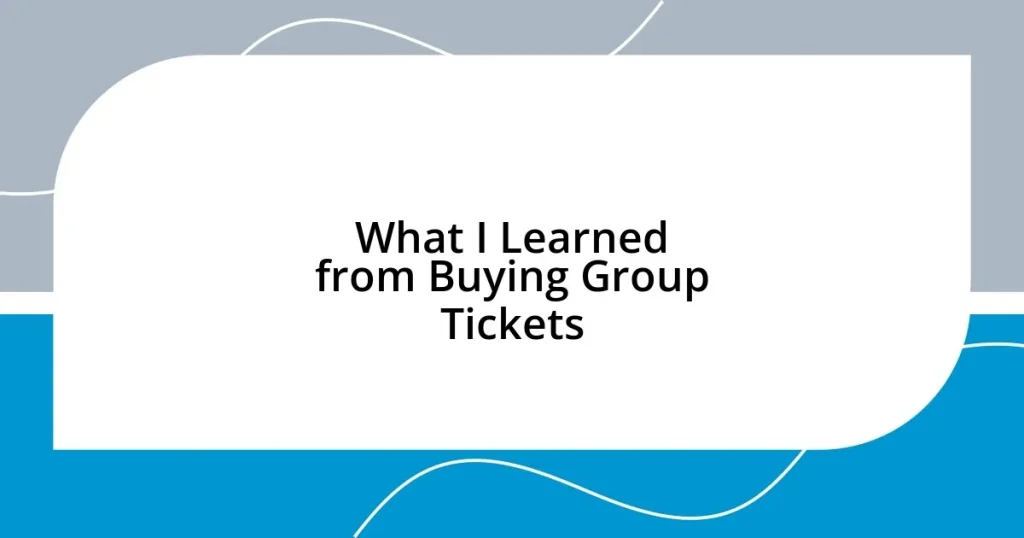Key takeaways:
- Effective negotiation requires understanding both parties’ needs, active listening, and clear communication.
- Preparation involves thorough research, setting clear goals, and visualizing the negotiation process to boost confidence.
- Employ strategies like anchoring, knowing your alternatives (BATNA), and building rapport to foster collaboration.
- Post-negotiation follow-up strengthens relationships and reaffirms the mutual benefits discussed during negotiations.
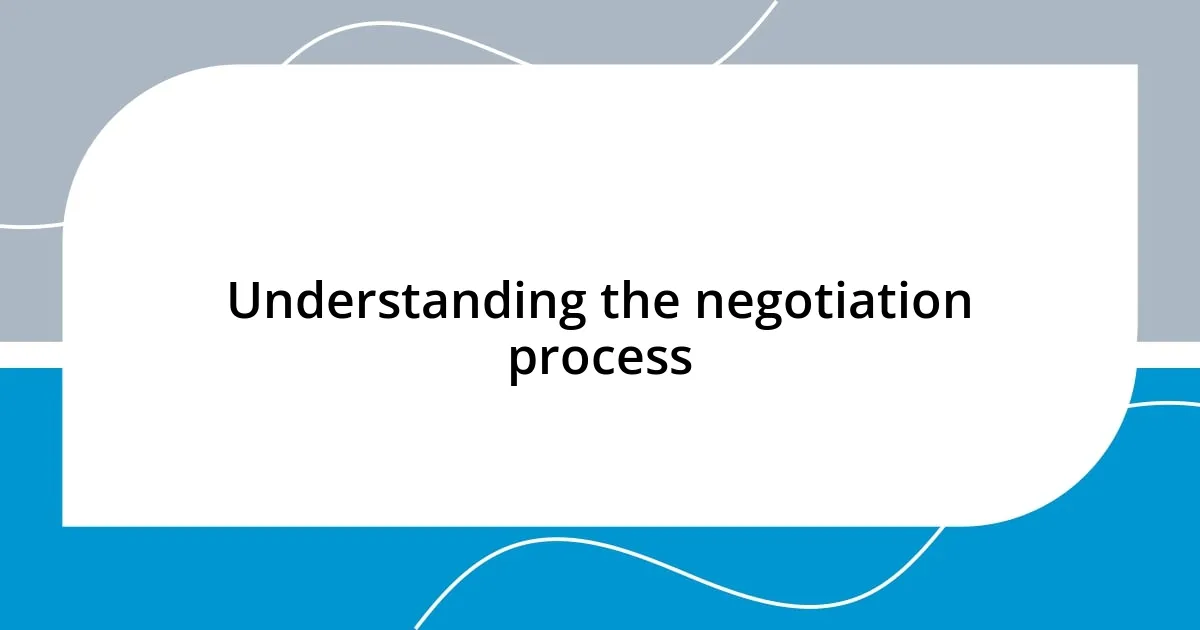
Understanding the negotiation process
Negotiation is much more than just reaching an agreement; it’s an emotional journey where understanding each party’s needs plays a crucial role. I remember a time when I felt intimidated sitting across the table from a seasoned seller. As I listened carefully to their concerns and motivations, I realized that genuine empathy could bridge the gap between us.
When you enter a negotiation, it’s important to come prepared with research but also to remain flexible in your approach. During one memorable negotiation for a service contract, I learned that my willingness to adapt my offers based on the other party’s feedback made them more receptive to my terms. Isn’t it interesting how flexibility can often lead to better outcomes than rigid insistence on our initial position?
At the core of effective negotiation lies active listening and clear communication. I often reflect on a pivotal experience where I thought I was advocating for my best interest, only to find out that I hadn’t truly listened to the other side’s needs. This realization opened my eyes to the power of dialogue—a dance of sorts, where both parties must take turns leading to find common ground. The question I ask myself now is, how can we ensure that everyone feels heard and valued in these exchanges?
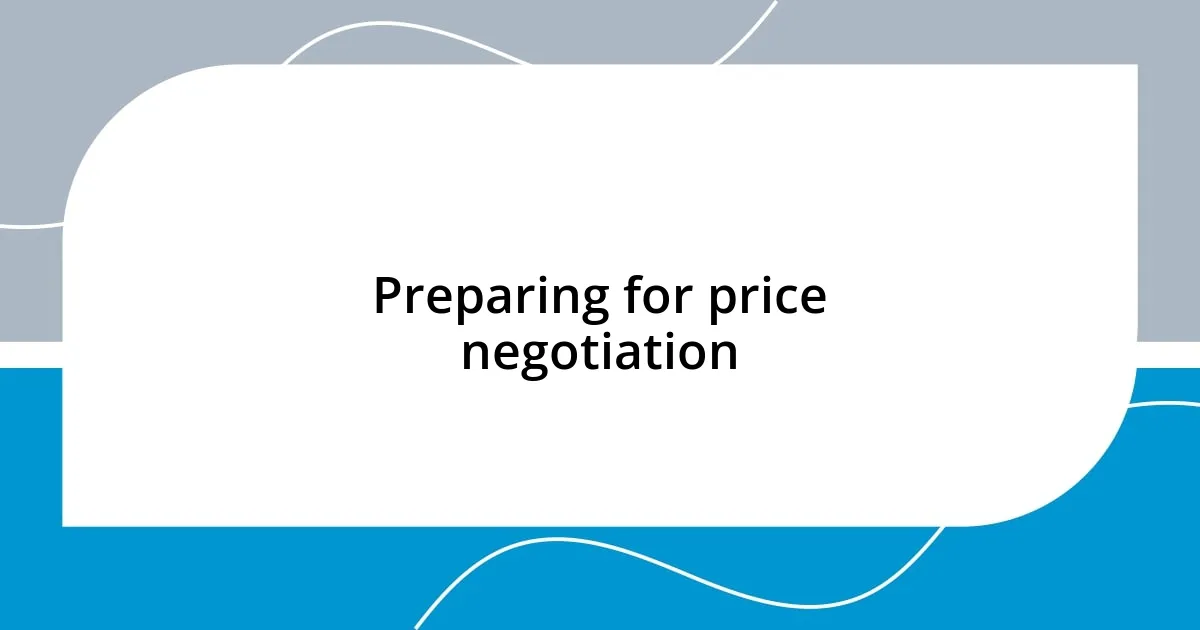
Preparing for price negotiation
Preparing for a price negotiation requires thoughtful consideration of several factors. I’ve found the key lies in understanding not just what I want, but also what the other party might be aiming for. For instance, when I prepared for a recent negotiation with a vendor, I spent time analyzing their offerings, competitors, and even their pain points. This research made me feel more confident and created an atmosphere of mutual respect during the discussions.
A crucial part of my preparation involves setting clear goals and limits. Before approaching the negotiation table, I outline my desired outcome and establish my walk-away point. In one instance, I was negotiating the price of software for my business. Knowing my budget beforehand helped me navigate through the back-and-forth without losing sight of my financial boundaries, which prevented any last-minute emotional decisions that could have cost me significantly.
Lastly, visualizing the negotiation can be incredibly beneficial. I remember a time I practiced my approach in front of a mirror, imagining myself confidently presenting my case while remaining open to counteroffers. It may sound a bit quirky, but this simple exercise transformed my mindset and allowed me to enter the negotiation room with a sense of clarity and purpose.
| Key Preparation Elements | My Experience |
|---|---|
| Research | Analyzed vendor offerings and pain points for confident discussions. |
| Setting Goals | Outlined desired outcomes and budget limits to stay focused. |
| Visualization | Practiced confidently presenting my case, which boosted my confidence. |
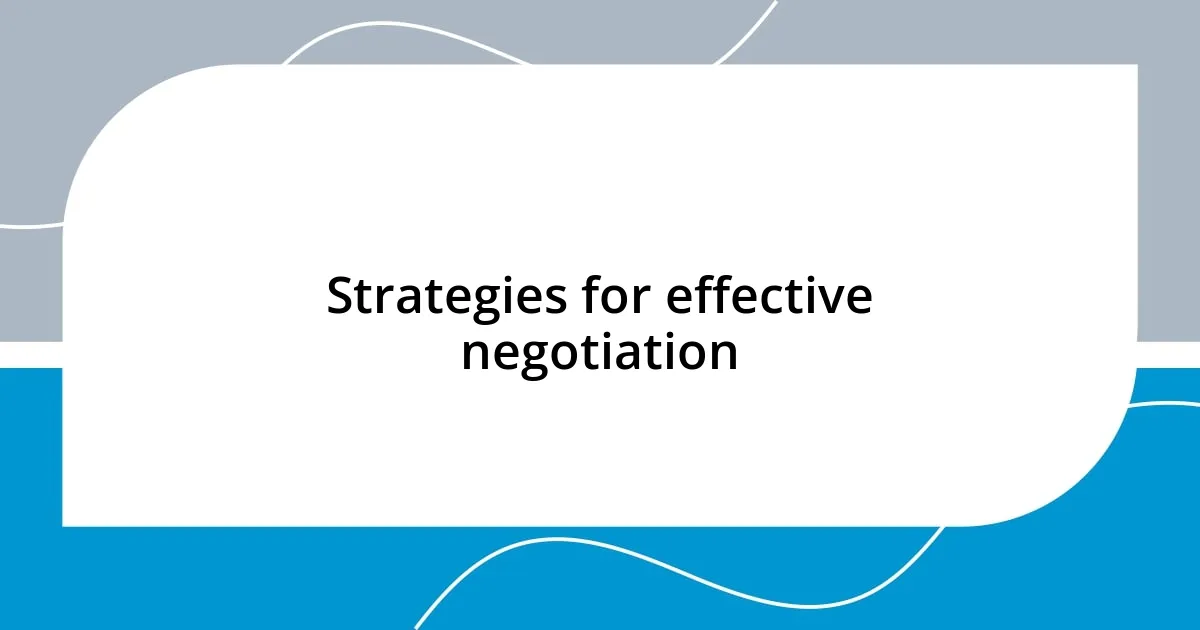
Strategies for effective negotiation
Negotiation thrives on the strategies you employ to create an atmosphere that fosters collaboration. One technique I’ve found particularly effective is anchoring—the practice of establishing a reference point in negotiations. During a recent discussion about a contract renewal, I proposed an initial offer that was slightly below what I had originally hoped for. Surprisingly, this not only allowed me to set the stage, but it also opened a dialogue that led to a compromise where both sides felt satisfied. It’s fascinating how starting at a particular point can influence the entire trajectory of the conversation.
Here are some additional strategies that have proven effective for me:
- BATNA (Best Alternative to a Negotiated Agreement): Knowing your alternatives gives you leverage. I once walked into a meeting with a solid backup plan that made me feel empowered to advocate for my position confidently.
- Timing is key: I’ve learned that the timing of your offer can impact its acceptance. During one negotiation, proposing my terms early, right after a positive discussion, helped maintain engagement and enthusiasm.
- Building rapport: Establishing a connection with the other party goes a long way. I often start conversations with small talk, as it creates ease and makes the subsequent discussions feel more personal.
- Non-verbal communication: I’ve noticed that my body language can influence negotiations significantly. Maintaining eye contact and using open gestures reassures the other person, making them more receptive.
Leveraging these strategies requires a blend of confidence, empathy, and flexibility—it’s all about striking the right balance for a successful outcome.
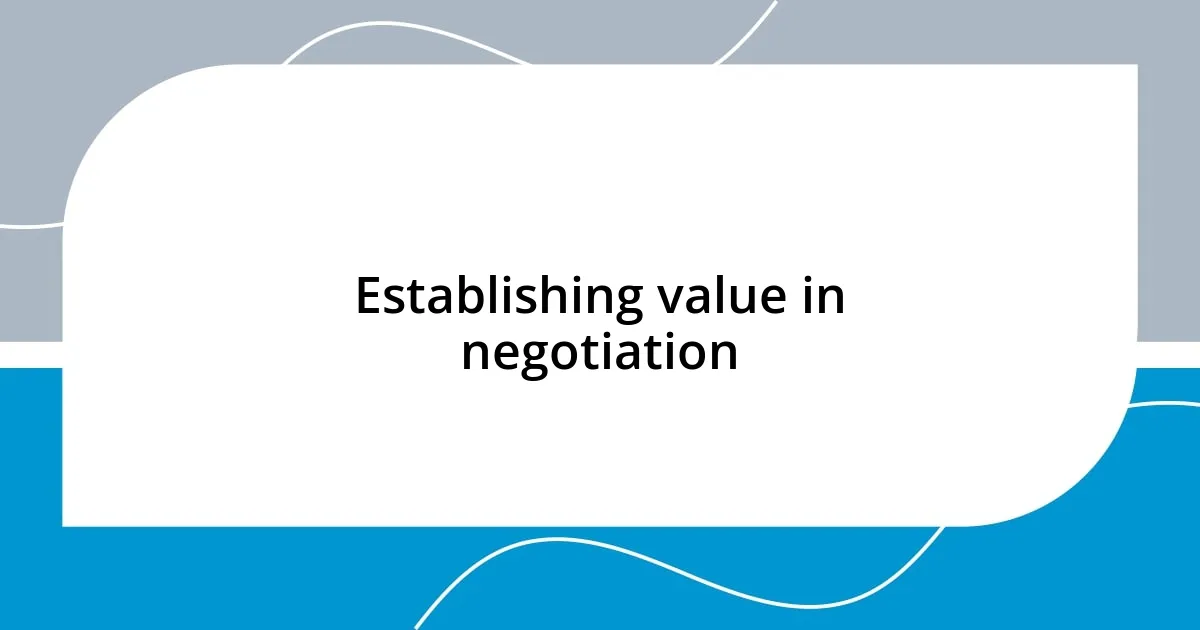
Establishing value in negotiation
Establishing value in negotiation is an art that blends understanding and effective communication. When I approach a negotiation, I always reflect on how my offer addresses the needs of the other party. For example, in a discussion about contract pricing with a service provider, I illustrated how my continued business could assure them a steady income stream. This shift from a number-based discussion to value-added benefits helped shape a mutually agreeable outcome.
I also focus on effective storytelling to convey value. During a negotiation with a supplier, I shared a recent success story where their products significantly contributed to our sales growth. I could see their eyes light up, as it reaffirmed their worth in the partnership. This kind of personal narrative not only established value but also painted a picture of future possibilities, which made them more amenable to discussing terms.
Finally, I find it’s essential to listen actively to the other party’s concerns. When I genuinely understood their hesitation in lowering prices, I could address these issues directly, such as offering longer contract terms as a trade-off. How often do we consider the other side’s point of view in our negotiations? This approach fosters a collaborative atmosphere, revealing the true value we can create together, rather than simply debating numbers.
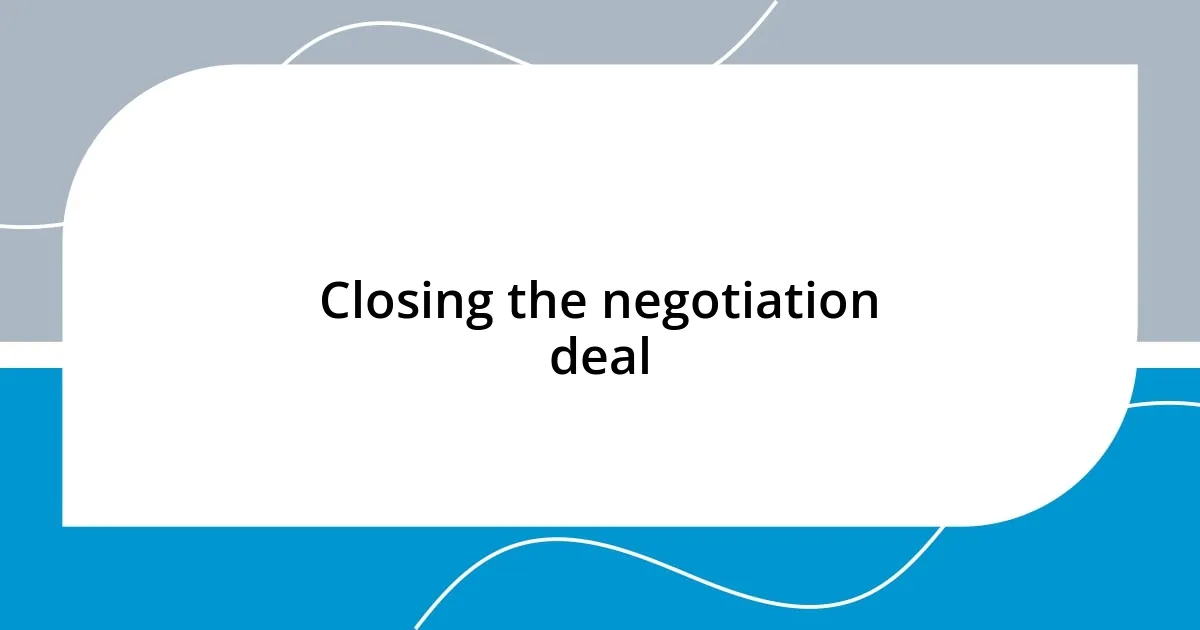
Closing the negotiation deal
When it comes to closing the negotiation deal, it’s all about reading the room and timing your move just right. I remember one time when I sensed the other party was ready to concede. I could almost feel their hesitation dissipate. In that moment, I confidently asked where we could finalize our agreement. The atmosphere felt charged, and it became clear that a definitive offer would seal the deal.
Another key element in closing a negotiation is reiterating the value we discussed. I once wrapped up a negotiation by summarizing the core benefits that both parties would gain. “Let’s recap,” I said, “with this agreement, you’ll have guaranteed business, and I’ll receive the cost efficiencies I need.” This helped remind everyone of the mutual advantages we were working towards. It’s fascinating how a simple recap can create a sense of urgency and motivate both sides to agree.
Finally, don’t underestimate the power of a firm, yet friendly, closing statement. After a lengthy discussion, I once ended with, “I’m excited about how we can move forward together. Shall we put it in writing?” It’s both direct and inviting, which tends to prompt an immediate response. In my experience, such statements not only clarify intentions but also bring the negotiation to a satisfying conclusion. Have you ever noticed how the right words at the end can solidify what you’ve built throughout the discussion?
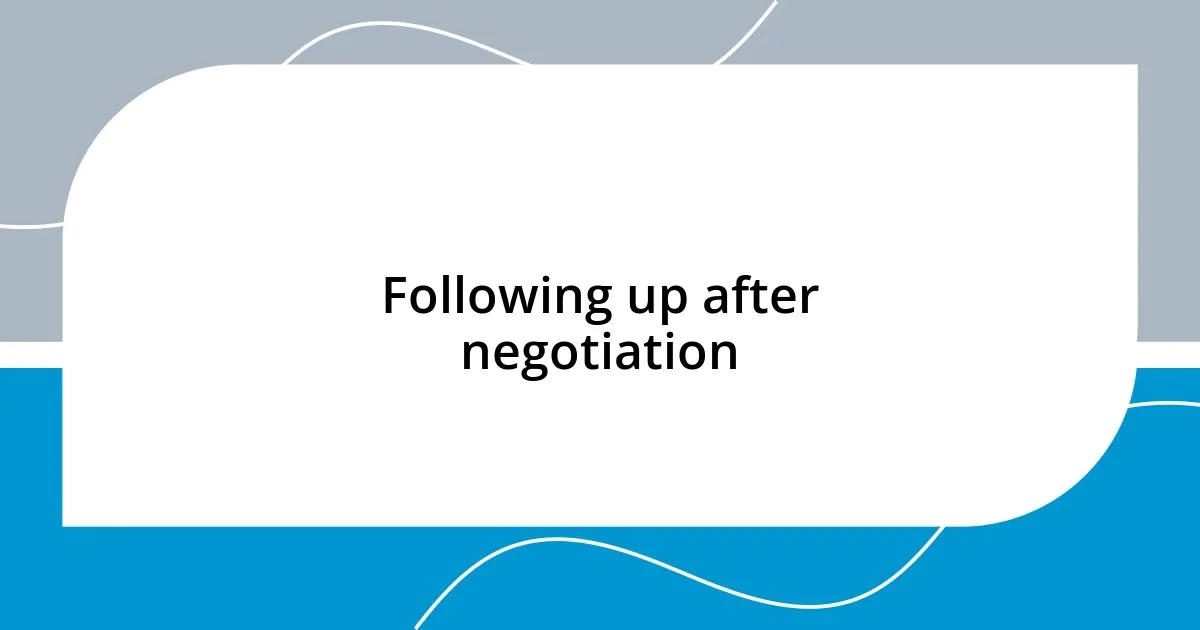
Following up after negotiation
Following up after a negotiation is a crucial step that I’ve learned not to overlook. After one particularly intricate negotiation with a vendor, I took the time to send a heartfelt thank-you note. It wasn’t just a courtesy; I expressed my appreciation for their willingness to compromise. This small gesture reinforced goodwill and laid a solid foundation for our ongoing relationship.
I’ve also found that a brief follow-up call can work wonders. After finalizing a contract, I reached out to discuss any lingering questions both sides might have. This allowed us to clarify any uncertainties and strengthen our connection. Plus, it demonstrated my commitment to a collaborative partnership. Isn’t it reassuring when someone goes the extra mile to ensure a smooth transition post-negotiation?
Finally, keeping the lines of communication open is essential. I make it a habit to share updates on how our newly established terms are benefiting both parties. Recently, I sent an email highlighting how our agreement positively impacted our operations. This not only kept everyone informed but also reaffirmed the rationale behind our negotiation. How do you stay engaged post-negotiation to nurture your business relationships?
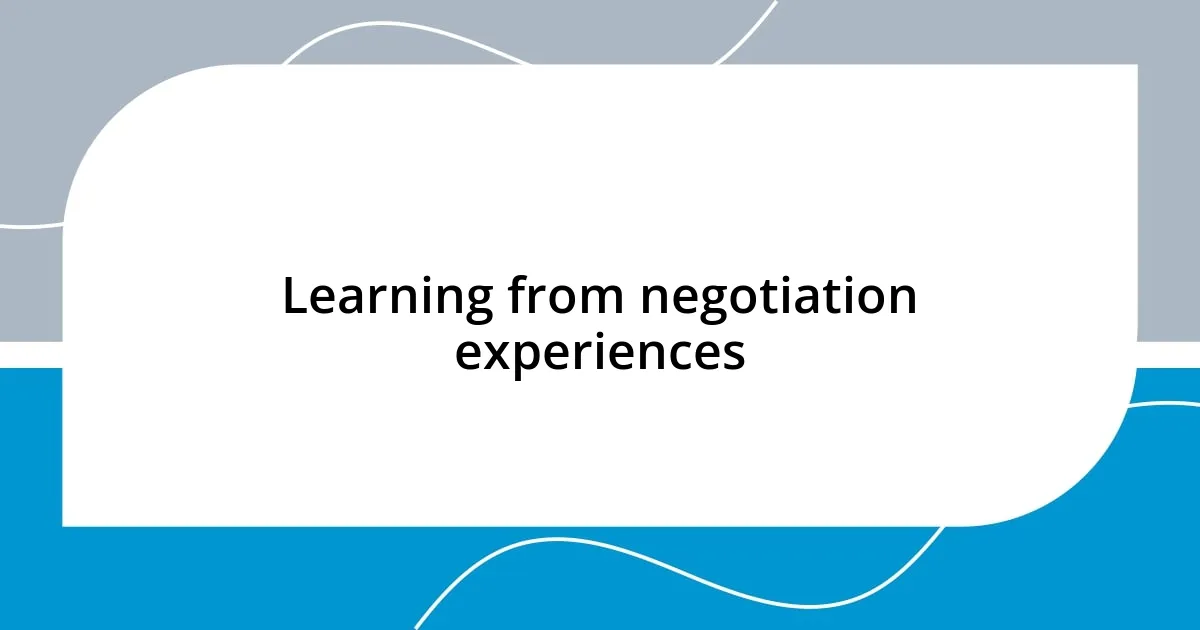
Learning from negotiation experiences
Learning from every negotiation experience has been a transformative journey for me. I recall a challenging scenario where my initial proposal was met with resistance. Instead of getting discouraged, I took a step back and actively listened to the other party’s concerns. This moment of vulnerability turned into a learning opportunity, which reminded me that understanding the needs of others can be the key to finding a middle ground. Have you ever realized that the best insights often come from listening?
Another memorable lesson arose from a negotiation that initially seemed straightforward. I walked in with my set expectations, but those quickly shifted as new information emerged during our discussion. I learned the importance of adapting my approach in real time. The experience reinforced that flexibility in negotiations can open up possibilities I hadn’t previously considered. In my opinion, it’s essential to foster a mindset that welcomes change rather than clings stubbornly to preconceptions.
Reflecting on past negotiations, I’ve recognized patterns in what works and what doesn’t. For example, I now appreciate that building rapport is just as important as crunching numbers. There was a time when I underestimated the emotional element of negotiation, but I’ve come to understand that trust plays a pivotal role in reaching agreeable terms. What lessons have you picked up that shifted your perspective on how to negotiate effectively?











